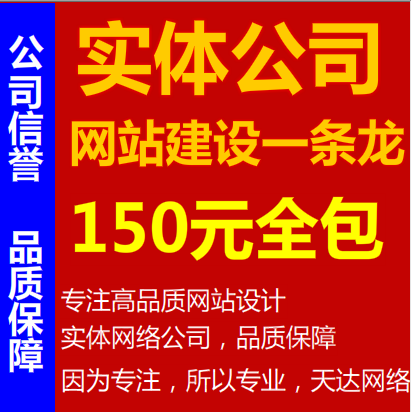Hibernate通用序列化方案,避免延迟加载有关问题及序列化整个数据库至客户端
日期:2014-05-16 浏览次数:20711 次
Hibernate通用序列化方案,避免延迟加载问题及序列化整个数据库至客户端
在使用Ajax: Hibernate Entity => json,?Flex RemoteObject:?Hibernate Entity => ActionScript Object的过程,经常碰到如下问题:
问题:
1.Hibernate碰到延迟加载的属性访问时如果session被关闭则抛出LazyInitializationException
2.Hibernate中的one-to-many等关联关系在序列化时如果没有控制,则将整个数据库都有可能被全部序列化
3.过多的使用DTO/ValueObject解决这个问题.
解决办法:
对Entity对象生成一个动态代理,拦截getXXXX()方法,如果访问的是延迟加载的属性,则return null,而不抛出LazyInitializationException,递归生成属性的代码,只要碰到未延迟加载的属性,而序列化会自动停止.避免将整个Entity序列化传播,导致可能序列化整个数据库的问题.
类似解决方案:
dwr中HibernateConverter,在序列化时如上类似,碰到延迟加载的属性自动停止convert工作.而HibernateBeanSerializer则一劳永逸,无论object => json都可以工作.
?
使用用例:
?
//role为原始对象 role = (Role)roleDao.getById(new Long(1)); //生成的动态代理proxyRole,访问延迟加载的属性将return null Role proxyRole = (Role)new HibernateBeanSerializer<Role>(role).getProxy(); assertNotNull(role.getResource()); assertNull(proxyRole.getResource()); //延迟加载,为null Hibernate.initialize(role.getResource()); //抓取进来 assertNotNull(proxyRole.getResource()); //不为null
??
?
源码.
package cn.org.rapid_framework.util;
import java.lang.reflect.Modifier;
import java.util.ArrayList;
import java.util.Collection;
import java.util.LinkedHashMap;
import java.util.LinkedHashSet;
import java.util.List;
import java.util.Map;
import java.util.Set;
import org.aopalliance.intercept.MethodInterceptor;
import org.aopalliance.intercept.MethodInvocation;
import org.hibernate.Hibernate;
import org.hibernate.collection.PersistentCollection;
import org.hibernate.proxy.HibernateProxy;
import org.springframework.aop.framework.ProxyFactory;
import org.springframework.util.StringUtils;
/**
* 用于Hibernate Object 的序列化,访问延迟加载的属性不会抛出LazyInitializationException,而会返回null值.
* 使用:
* <pre>
* Blog proxyBlog = new HibernateBeanSerializer(blog).getProxy();
* </pre>
* @author badqiu
* @param <T>
*/
public class HibernateBeanSerializer <T> {
T proxy = null;
/**
*/
public HibernateBeanSerializer(T object,String... excludesProperties) {
if(object == null) {
this.proxy = null;
}else {
ProxyFactory pf = new ProxyFactory();
pf.setTargetClass(object.getClass());
pf.setOptimize(true);
pf.setTarget(object);
pf.setProxyTargetClass(true);
pf.setOpaque(true);
pf.setExposeProxy(true);
pf.setPreFiltered(true);
HibernateBeanSerializerAdvice beanSerializerAdvice = new HibernateBeanSerializerAdvice();
beanSerializerAdvice.setExcludesProperties(excludesProperties);
pf.addAdvice(beanSerializerAdvice);
this.proxy = (T)pf.getProxy();
}
}
public T getProxy(){
return this.proxy;
}
static private class HibernateBeanSerializerAdvice implements MethodInterceptor {
private String[] excludesProperties = new String[0];
public String[] getExcludesProperties() {
return excludesProperties;
}
public void setExcludesProperties(String[] excludesProperties) {
this.excludesProperties = excludesProperties == null ? new String[0] : excludesProperties;
}
public Object invoke(MethodInvocation mi) throws Throwable {
String propertyName = getPropertyName(mi.getMethod().getName());
Class returnType = mi.getMethod().getReturnType();
if(propertyName == null) {
return mi.proceed();
}
if(!Hibernate.isPropertyInitialized(mi.getThis(), propertyName)) {
return null;
}
if(isExclude(mi, propertyName)) {
return null;
}
Object returnValue = mi.proceed();
return processReturnValue(returnType, returnValue);
}
private Object processReturnValue(Class returnType, Object returnValue) {
if(returnValue == null)
return null;
if(returnType != null && Modifier.isFinal(returnType.getModifiers())) {
return returnValue;
}
//This might be a lazy-collection so we need to double check
if(!Hibernate.isInitializ
免责声明: 本文仅代表作者个人观点,与爱易网无关。其原创性以及文中陈述文字和内容未经本站证实,对本文以及其中全部或者部分内容、文字的真实性、完整性、及时性本站不作任何保证或承诺,请读者仅作参考,并请自行核实相关内容。
